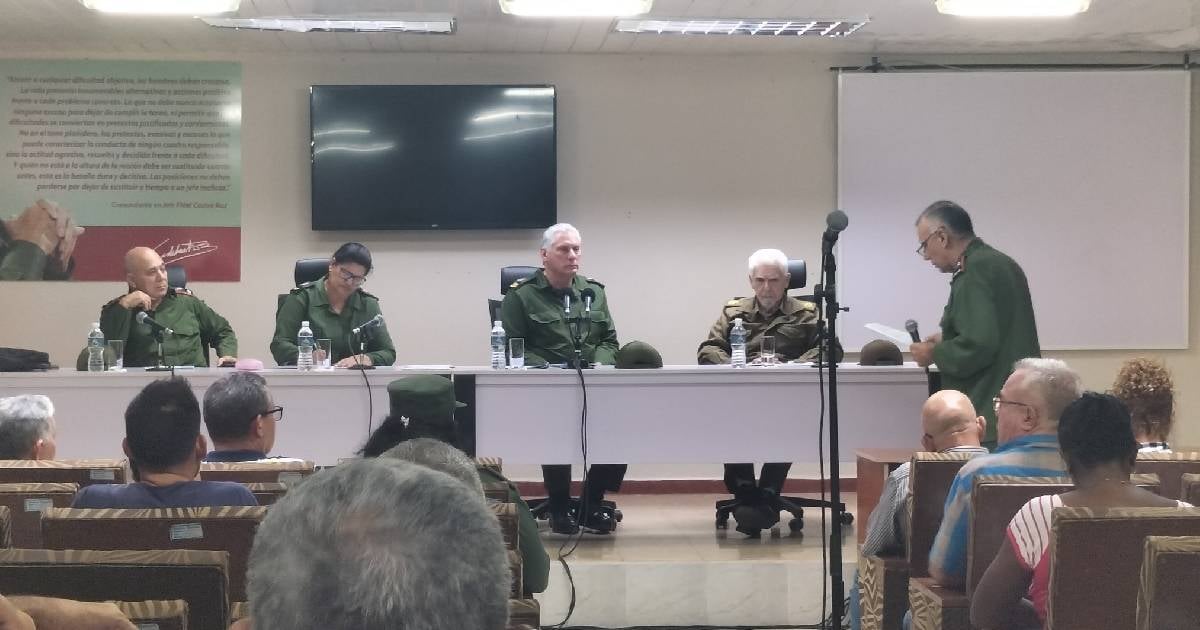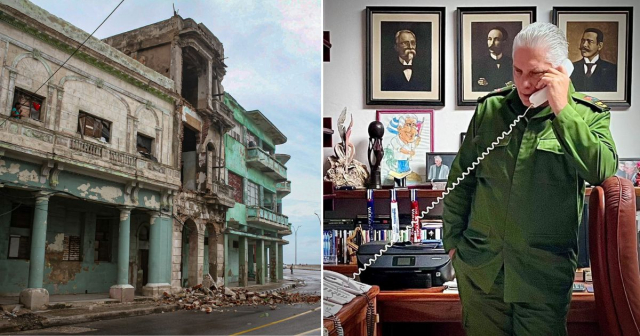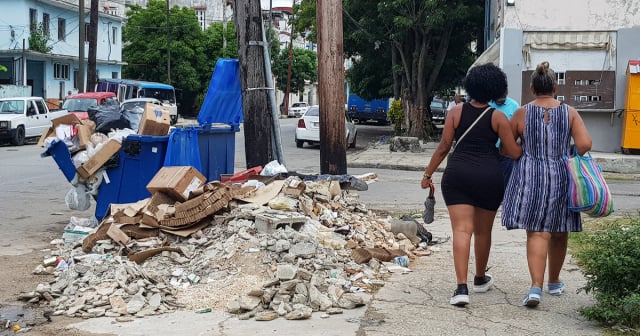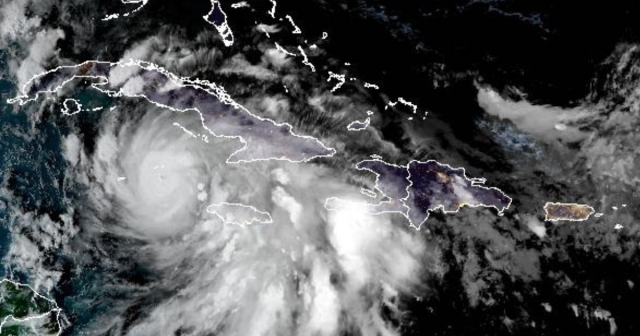
Miguel Díaz-Canel arrived on Thursday afternoon in Artemisa, one of the provinces most affected by Hurricane Rafael.
Rafael struck Cuba on the evening of Wednesday, November 6, affecting primarily Artemisa, Mayabeque, and Havana.
The president's arrival in Artemisa comes less than 24 hours after the storm, as highlighted by official media, in contrast to his arrival in Guantanamo following Hurricane Oscar.
According to the Presidency of Cuba, during his trip to Artemisa, Díaz-Canel stopped at kilometer 32 of the Habana-Pinar del Río highway to speak with the team working on the six high-voltage towers that were damaged by the hurricane, which is currently the most challenging site.
As it passed through the province of Artemisa, Rafael left a trail of destruction, including significant damage to several hospitals in this western territory and to sports facilities, primarily baseball stadiums.
Photographs shared on the Facebook profile "MINFAR Cuba" also reported the agricultural losses caused in this area, particularly in Güira de Melena, Bauta, San Antonio de los Baños, and the provincial capital.
Despite the damages, which are still being assessed, the authorities have not reported any loss of human life due to the storm.
Díaz-Canel's arrival in Artemisa happened more quickly than his arrival in San Antonio del Sur and other Guantanamo territories affected by Hurricane Oscar on October 20, 2024.
In Guantánamo, the leader arrived three days after Oscar passed through, stating that "no Cuban has been left to fend for themselves" in this natural disaster. However, as a result of that storm, there are still people missing, and eight confirmed fatalities to date.
In contrast to Hurricane Oscar, as Rafael approached the western part of the country, especially Havana, the authorities adopted a broader preventive approach.
Early alerts were issued, and evacuations were carried out in at-risk areas. The Cuban Meteorological Institute kept the public informed about the development of Rafael, promoting precautionary measures.
What do you think?
COMMENTFiled under:






